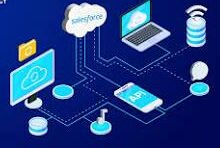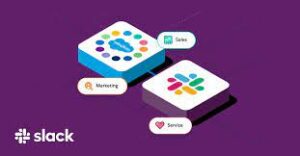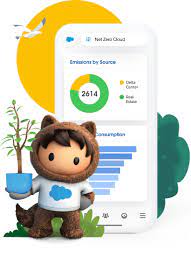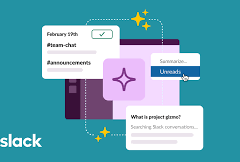Chances are a co-worker has at least once offered to “Slack” you something—whether it’s a file, a work order, or a phone number. The first time I heard this phrase, I was concerned about potential physical harm, only to learn that “Slack” refers to a messaging application for businesses and much more.
This insight takes a deep dive into Salesforce’s collaborative tool.
Slack is a messaging app for businesses that connects people to the information they need. Many companies utilize Slack from Salesforce as a centralized hub for various purposes. From project collaboration to casual “water cooler” conversations. This is especially vital for remote teams spread across different locations and time zones.
At Tectonic, we’ve integrated Slack channels for accounts and Salesforce tools. For projects, events, webinars, and training, fostering seamless communication. Slack is becoming increasingly popular for its compatibility with Salesforce and numerous applications, across diverse workplaces.
As opposed to text messaging or emails, Slack is an efficient messaging app making it easier to communicate and organize conversations.
To understand Slack, it’s helpful to distinguish between its two primary communication forms. Channels and direct messages (DMs). Slack channels are tailored by users to bring the right people together. By facilitating the sharing of information, files, thoughts, and project details. In contrast, direct messages are private, one-off conversations ideal for topics outside specific channels.
Conversations within the channels are transparent and accessible to everyone, except for private channels, marked with a lock symbol. Direct messages, on the other hand, are suited for smaller, individual conversations.
Starting a new conversation in the platform is as simple as clicking the compose button and drafting a message. It can be for a specific channel or individual. Mentioning a team member using @team-members-name ensures that they see your message and are notified when it is posted.
Emojis
Slack’s wide variety of emoji reactions add a fun element, with commonly used emojis like eyes or check marks indicating engagement or task completion. Custom emojis can be created for personalized use or to trigger automated workflows within your Salesforce project. The eyes emoji, for example, typically means the message reader is taking at a look at whatever was referenced in the post.
Slack customization is a key aspect of its effectiveness. Updating your profile, integrating with your calendar for availability status, and setting relevant notifications. Utilizing shortcuts, apps, and integrations can enhance collaboration efficiency. Tectonic conducts a comprehensive discovery of your organization’s processes to recommend tailored ways this tool can boost your overall efficiency.
Sharing files is easy, with seamless integration with popular file storage tools like Dropbox and Google Drive. Slack’s scheduling feature allows you to compose messages and schedule delivery at more appropriate times, making it a valuable organizational time management tool. Users can set their in and out of office times. Thus silencing notifications outside working hours. Slack also has a mobile app so users can stay connected from anywhere.
Chat-based Collaboration Comparisons
This chat-based collaboration tool that emphasizes communication. Whereas Microsoft Teams is a comprehensive collaboration suite that offers chat, video conference, and integrated document management. Teams is a part of the Microsoft ecosystem, while Slack is a standalone tool from Salesforce with robust third party integrations.
The primary difference between Google Chat and Slack includes search and customization options and the amount of storage offered. Slack offers more customization options, Google Chat offers unlimited storage in Business and Enterprise plans.
Slack differs from Skype in that it takes communication to the level of collaboration by bringing together teams, tools, and workflows in a single platform.
The sweet spot for Slack seems to be in companies with 20-50 employees.
Many businesses are moving away from email and into channels, Away from legacy suites and onto customizable platforms that can connect more easily. In 2019 the platform broke the 12 million user daily activity level and continues to grow by about 37% every year.
Cross-channel Integrations
Slack offers thousands of cross-channel integrations with other apps, not just email and Salesforce.
This collaborative tool was developed by Slack Technologies, owned by Salesforce. It offers freemium and paid subscription services, and offers text messaging, file and media sharing, voice and video calls, and group chat for team collaboration.
Slack has the capacity to support an unlimited number of users per organization, channels per workspace, and over 100,000 users on a channel.
All content in the channels is searchable. Thereby making it an easy repository for conversations which ultimately contain a lot of information users want to reference back to. Slack also offers bookmarking of content, pinning of content and other assorted features for information organization.
Default Slack settings encrypt data at rest and data in transit. Data is further protected with tools like Slack Enterprise Key Management, audit logs, and integrations with top data loss prevention providers.
Slack received its official name in 2012 from Stewart Butterfield. He replaced the product codename of linefeed with the communication tool which he said was derived from Searchable Log of All Conversation and Knowledge.
If you’re curious about how Slack can enhance your Salesforce experience, reach out to Tectonic for a free quote or demo today.













